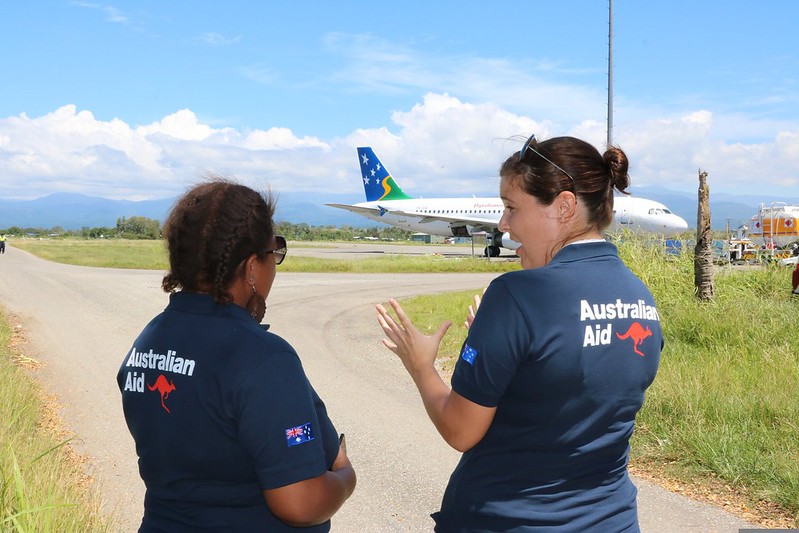
Greeting the arrival of an Australian funded COVID-19 support package, Solomon Islands
Foreign aid set to be cut next year to below pre-pandemic levels
By Stephen Howes
9 December 2021
When the COVID-19 pandemic hit, the Australian government reversed its earlier policy of cutting aid, and started to increase it. Aid increased from 2019/20 (before the pandemic) from $4.29 billion to $4.56 billion in 2020/21 (the first year of the pandemic). (All amounts are adjusted for inflation, and expressed in 2021 prices.) But this year, the government started to cut aid again, not all the way back to its pre-pandemic level but close to it.
The budget for aid in 2021/22 is $4.34 billion, not much more than its 2019/20 level. According to the forward estimates, and assuming that the budget is brought down before the federal elections next year, 2022/23 aid will be at only $4.1 billion. This will not only be lower than aid was in the year immediately prior to the pandemic, but the lowest level of aid during any year since the Coalition took office in 2013.

We are heading towards this outcome because the government’s COVID-19 aid response was designed on the basis that the pandemic would be short-lived. For example, the Pacific COVID-19 Response Package allocated an additional $200 million in 2020/21 and $100 million in 2021/22. With the additional pandemic-related funding petering out, and no real increase in the underlying or “core” aid budget, total aid is slated to fall.
This makes no sense at all. Clearly the pandemic is taking a lot longer to resolve than was hoped. One good measure of how far countries are from returning to normality is their vaccination rate. After all – as has been endlessly repeated in Australia – vaccination is the only way out.
The weighted average vaccination rate for the top ten recipients of Australian aid is just 20% (weighted by their share of total top ten aid). That compares to 73% for Australia, so it is less than one-third.
For two of our top ten aid recipients, the vaccination rate is less than 10% (PNG and Solomon Islands), and there are only two where it is greater than 50% (Fiji and Vietnam).

There are any other number of reasons why it would make sense to increase aid. Countries need support not only for vaccination, but for economic recovery. There are numerous other global crises that Australia should be supporting and isn’t, such as the African famine/drought, and the plight of refugees whose food rations have been cut. Public opinion seems to have become more favourable to aid. We have just committed to spend more aid on climate change. And we have become one of the least generous rich country donors.
Above all though, there is the simple logic that more aid is needed during the pandemic (as the government itself acknowledged by providing extra aid), and that the pandemic is taking longer to resolve than expected. The unavoidable conclusion is that more aid will need to be provided than originally expected.
This logic is surely on its own compelling enough to prevent next year’s aid budget being brought below pre-pandemic levels and becoming this government’s lowest foreign aid budget ever.
Disclosure
This research was undertaken with the support of The Bill & Melinda Gates Foundation. The views represent those of the author only.
About the author/s
Stephen Howes
Stephen Howes is Director of the Development Policy Centre and Professor of Economics at the Crawford School of Public Policy at The Australian National University.
